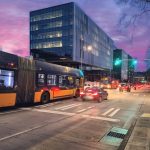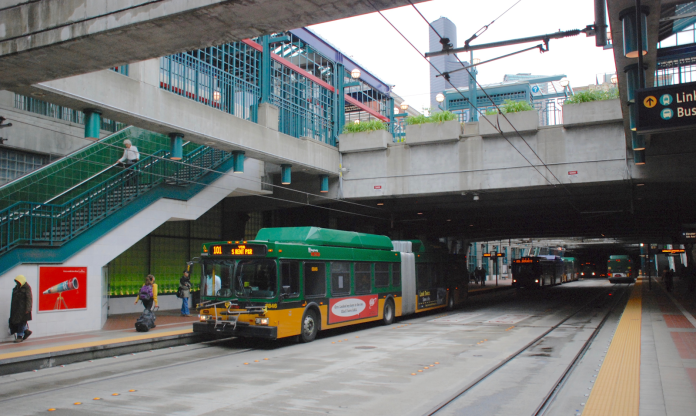
Urban subways serving dense neighborhoods should be the future of Seattle transit
Transit ridership has been falling for years now. Ever since peaking in 2014, more people than ever are turning their backs to transit and toward cars thanks to cheap gas and aging infrastructure. In cities like San Francisco, Chicago, and Los Angeles, transit ridership was dropping by the double digits annually. But not in Seattle. As transit was dying a slow death nationwide, our ridership increased by 4.1%. And even though that number have begun to flatten, we continued to outperform other American metropolitan areas in terms of growth until the pandemic hit.
But growth is just one piece of the puzzle; cities with high growth don’t always have the most ridership overall, and sadly that’s the category we fall into. Nearly twice as many people ride transit in Greater Boston, a region not much larger than ours, though even that pales in comparison to Vancouver BC, whose ridership is triple ours.
Both Boston and Vancouver’s higher transit ridership can largely be traced back to their extensive rail networks. A single 400-foot train can easily carry 800 more people than an articulated bus and can almost always do so faster. More capacity and faster travel times always means higher ridership–service drives demand.
Interestingly, our rail network is notably small for a city our size and even as it begins to take shape it’s more of a suburban commuting tool than a true urban transit network. That’s good, but it’s far from ideal.
Most people simply don’t make the traditional suburb-to-downtown commute anymore so while building transit specifically geared towards it is good, it’s a missed opportunity on a grander scale. Our currently planned Link expansion plans call for lines that skirt freeways and whose stations are few and far between, not much unlike the commuter buses we have now.
Our region has so many neighborhoods like Belltown, Wallingford, and First Hill that are already dense transit hotspots but which are being held back by limited transit capacity and clogged streets. These are the places our rail needs to go, and it’s time we designed a rail system that went there.
Drawing parallels
Our busiest, densest transit corridors are those that need rail, and Metro’s 8 and 44 buses fit that bill perfectly. Both are among Metro’s most popular buses, but are often plagued with delays; Route 44 is almost reliably late, and Route 8 is sometimes slower than walking.
Doug Trumm recommended a while back for light rail expansion along these bus lines, and Seattle Subway added slightly-modified versions to their Vision Map a bit later.
I won’t go too in-depth about the proposals here (the original articles are a much better read) but in general they call for two new rail lines, one from Ballard to UW and another from the Seattle Center to the Mount Baker that roughly parallel the 44 and 8 buses, respectively. Let’s focus on a hypothetical 8 Line since there’s a few reasons why it’s a bit more special:
- It’s fully underground. The 8 Line won’t interline with existing Link lines and will run on its own dedicated track underground.
- It’s going to have blockbuster ridership. The 8 (and 48) bus it replaces already handles thousands of passengers each day and upgrading it to rail could easily multiply ridership by adding capacity, slashing travel times, and accommodating growth.
- It’s got a dense, short route. The entire length of the 8 Line will only be about six miles long and many stations would be less than a mile apart. It wouldn’t stray much further south than I-90 or further north than 520.
All of this means that the 8 Line is going to be very different from the Link lines we have right now (ST2 and ST3 included). It wouldn’t run the suburban commute like some other lines do, nor would it mix with street traffic on the ground.
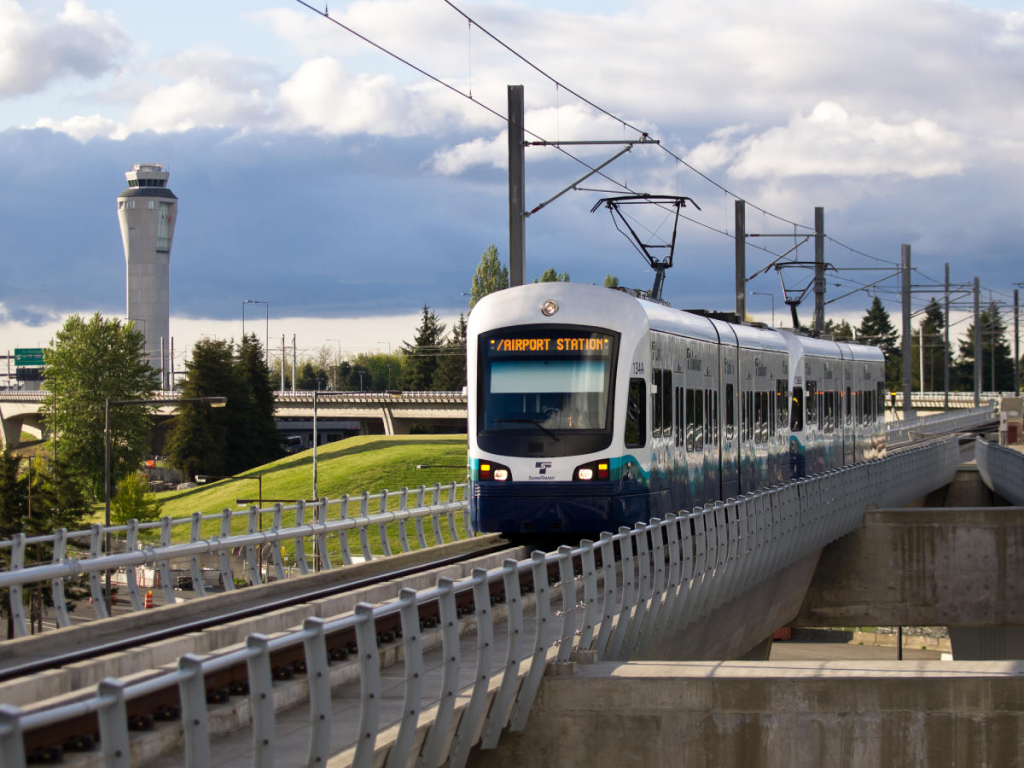
If anything, the 8 Line would be to Link as the London’s Underground (or “Tube”) is to its [under-construction] Crossrail; the two former systems are subways while the two latter ones are more of a mix of that and commuter rail. There are significant design differences between London’s Tube and Crossrail because the two modes have very different purposes–one to be an urban metro and the other to be a suburban commuter–much like the 8 Line and Link.
Both Crossrail and Link have trains that are taller and wider than most subways, and both draw their power from overhead wires rather than a third rail. Both stretch for about the same 60 miles end-to-end, vastly overshadowing their more-urban counterparts–the Victoria Tube line is just 13 miles long.
It might be strange to compare a mid-sized American city to a European metropolis three times the size, but the point is simple: rail isn’t a one-size-fits-all transit mode. Each transit line has its own purpose, and we should build each one with designs that are best fit for it.
Tunnels
Our current Link trains are about nine-foot wide but run through 21-foot wide (diameter) tunnels because of how tall they are. Because tunnels are dug by circular boring machines, there’s no way to make them narrower without also decreasing their height.
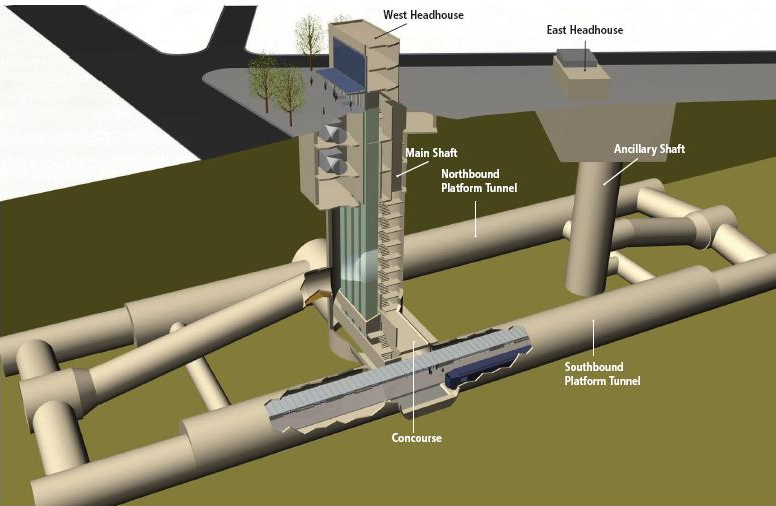
The vertically-stretched proportions of Link trains simply don’t fit well into tunnels–there’s a ton of excess space around the train–and necessitate them to be far larger than necessary.
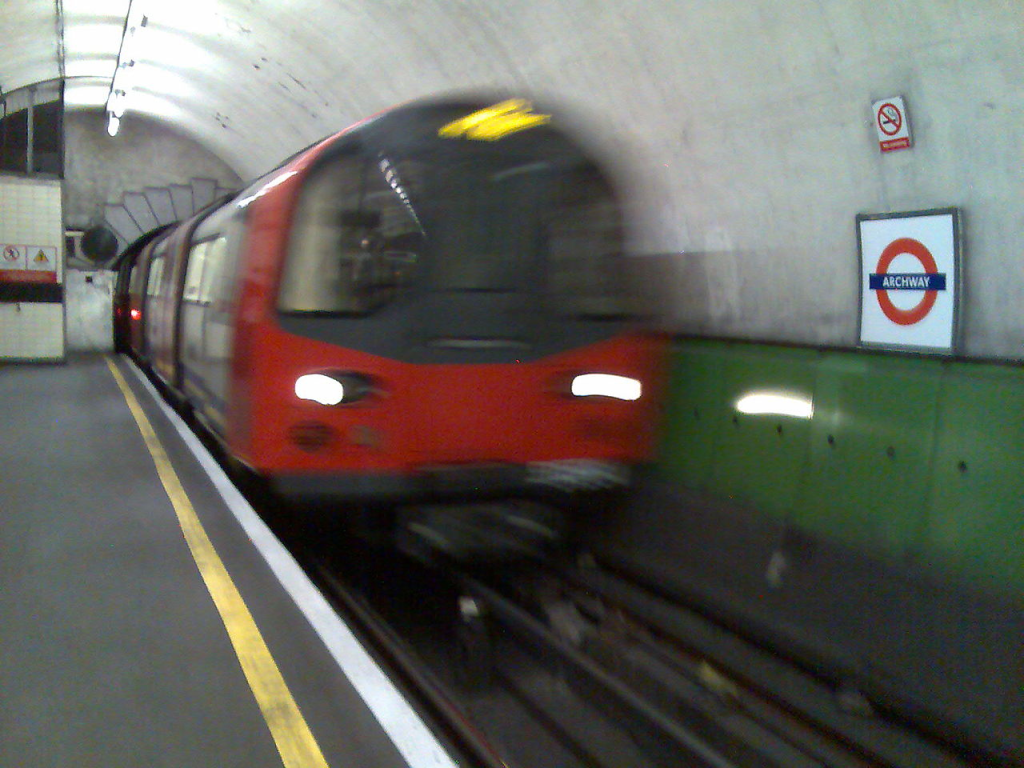
The London Underground, one of the busiest transit systems in the world, has deep-level tunnels that are just 12 feet in diameter–almost 40% narrower than ours–yet trains are the same nine-feet wide and have a near-identical passenger capacity. No space is wasted underground either because trains are built to fit the tunnels, not the other way around.

So why does tunnel diameter matter so much? Simple: it has a dramatic impact on cost. A 10-mile long tunnel is almost ⅓ cheaper to build using 12-foot tunnels rather than 21-foot tunnels. We can save tens of millions of dollars simply by making our tunnels slimmer (if you want to delve deeper into the math behind this, check out the author’s note after the end of the article).
Slimmer tunnels are also quicker to build since they require less dirt to be excavated. 21-foot tunnels might only be about twice as wide as 12-foot tunnels, but their cross-sections are over three times larger, meaning that building 12-foot tunnels will only require workers to dig up one-fourth as much dirt 21-foot ones would require.
Stations
The Link stations we have right now are, in a word, extravagant. Not only do they feature cool architectural details and public art (which in and of themselves aren’t necessarily bad things), but they’re also super deep. Some underground Link stations truly remind passengers that the journey is the destination–the journey from the ground to the platform at least (it’s quite a maze).
On the flip side, UW Station cost us over $140 million to build while Los Angeles is getting three stations for less than twice as much they’re are much, much shallower. Take a look at the Capitol Hill Station when it was still being built:
Needless to say, it’s very deep. A ton of ground excavation was needed, which cost tens of millions of dollars (though using Capitol Hill Station as an example might be erroneous since it’s naturally deeper due it being located on a hill). Shallower stations, on the other hand, only require less than half as much excavation so they’re quicker to build and cheaper. The ID/Chinatown station is a good example of this (just imagine it fully lidded with a road running on top):
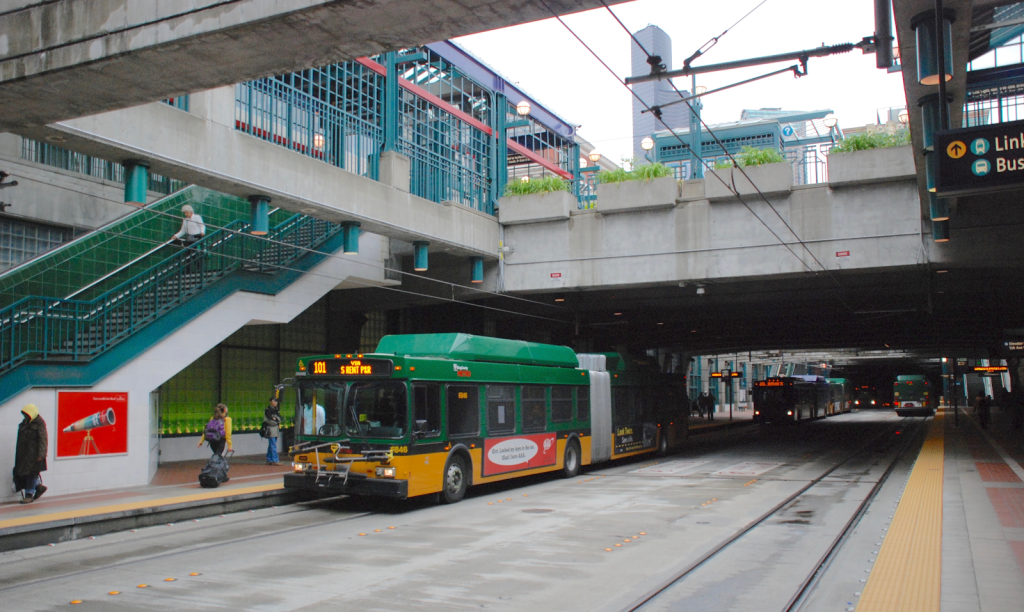
Ostensibly the reason we aren’t building shallower stations is disruption; shallow sub-surface stations need to be built under roads so their construction would require ripping up busy corridors and storefronts for at least a few months. But if we don’t choose to build stations under roads, they’ll have to be deep enough that the connecting tracks won’t hit building foundations. Is it a price that should be paid? Perhaps, but I’m probably not the one to decide.
Interestingly, shallower stations also come with another unique perk: since trains usually cruise at depths much deeper than that of the stations, stations are at the top of a hill in the tracks. Gravitational energy is stored by trains as they decelerate uphill into stations and helps trains accelerate downhill when they have.
On the Victoria Line these hump-backed stations provide an energy saving of 5% and speed up trains by about 9%. It might not seem like much but in the grand scheme of things these things add up; humped stations allow trains to travel at their top speeds for longer.
And while shallower stations might not be feasible for more drastic elevation changes (from Capitol Hill to Fairview, for example), it’s a good thing to keep in mind for stations in the central area and South Lake Union where there’s flatter terrain.
A good transit line can unleash Seattle’s transit potential and transform, but only if it exists. By choosing to slim out tunnels, we’ll be taking a step to tackle the cost barriers that are preventing quality transit from being built.
In part 2, we’ll explore automation technologies that can help us build a better transit system and visions for our transit future.
Brandon Zuo is a high schooler and enjoys reading about urban planning and transportation. They enjoy exploring the city on the bus and on their bike. They believe that income and racial equality should be at the forefront of urban development. Brandon Zuo formerly wrote under the pseudonym Hyra Zhang.


